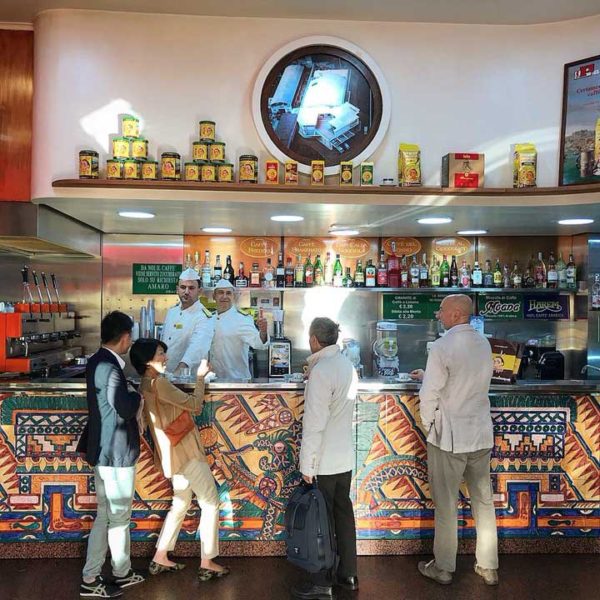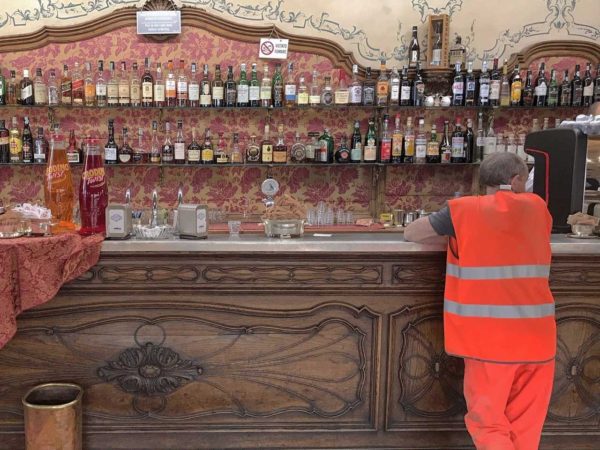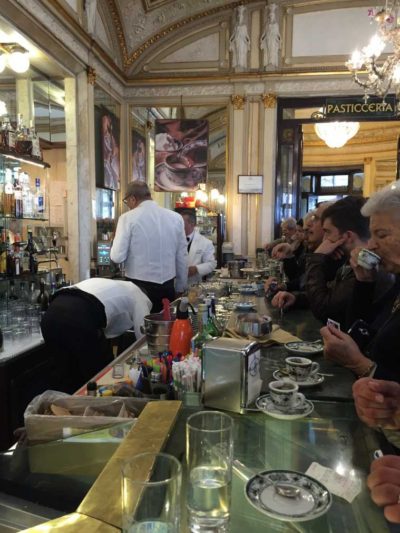In early 2019, The Washington Post published a piece that described the state of coffee in Italy as a “time-capsule,” a coffee culture that had failed to modernize. As an American specialty coffee roaster with Italian roots, we think that there’s much more to the story. Here’s our response:
Coffee Culture in Italy
It’s true that modern, or “third wave” coffee hasn’t caught on in Italy as it has elsewhere; the price for an espresso is nominal (about one euro); the coffee culture is social and egalitarian; and the quality of most coffees used in coffee bar blends could be better. But the reasons why things remain this way are complex.
To start, it’s worth opening up a discussion about the flavors Italians prefer, which have a lot to do with how they drink their coffee: as espresso – every day, all throughout the day. In Italy, an espresso break is a time to pause, and it’s not unusual to consume up to five or six espressos throughout the day. It is expected to be a recognizable, satisfying flavor, not analyzed for notes and nuance.

Bar Mexico – Naples, Italy
By contrast, in our American coffee culture, espresso is less common. Our preferences stretch from lattés to cold brew to pour-overs, to every combination of milk with espresso, and most often we drink drip coffee. But when we do decide to go to a modern or third-wave cafe and wait in line to order an espresso, we often are expecting a coffee “experience.”
While neither of these cultures is inherently better or more delicious, drinking espresso with the frequency that Italians do means they’re looking for familiar and reliably enjoyable flavors—usually darker, more full-bodied, and chocolatey or caramelly—over the more acidic, nuanced, challenging flavor experiences that characterize so much of third wave coffee.

Caffe Torino, Torino, Italy
It’s All About the Flavor (Most of the Time)
In Italy, espresso drinkers also want flavors that work well with a spoonful (or more) of sugar, which has been the customary way of enjoying espresso ever since it was invented in Italy. Most Italians will agree, espresso without sugar is like food without salt—not so much about the sugar, but about how it enhances or adds to the coffee experience. Espresso drinkers in Italy prioritize flavor over tasting notes and to them, a sweetened espresso simply tastes better than an espresso without sugar.
But more and more in Italy, the tradition of adding sugar has also had the unforeseen impact of enabling some roasters to get by with lower priced beans, and generally reducing the need—on the part of the roaster or consumer—to seek out more interesting coffees that can potentially offer more exotic flavors and higher levels of traceability. While sugar can’t mask the worst tasting coffee, it can make a blend of mediocre, or even lesser quality beans taste good.
In Mr. Espresso’s opinion, any resulting dip in quality does not mean Italian espresso drinkers don’t want or appreciate quality. It’s the unfortunate byproduct of the sugar custom and the one-euro price of espresso, which has not changed in 20 years. And yet, because Italy is traditionally good at making the most with modest ingredients, the espresso is still consistent and satisfying at a good price.
As for the price, we agree that it ought to be raised, even by €0,25 to €0,50. Such a small increase will allow roasters and coffee suppliers to buy higher quality beans with better traceability, to better support cafés and their staffs, and raise the bar by serving an even tastier espresso.
Italian Coffee Has A Bright Future

Caffe Gambrinus, Naples, Italy
So, we do agree: the current state of coffee in Italy is a bit of a “time-capsule.” The culture has evolved around the values of affordability, accessibility, and familiar flavors. The current crop of modern coffee operators are doing their part to blaze a trail and bring new traceability and quality standards to the table, and given the option, Italians may very well adopt more of their practices. But let’s not undercut a widely-loved tradition that’s been refining for hundreds of years and supplant it with something entirely new.
Rather, let’s improve within tradition, and welcome the trailblazers too. We can appreciate what specialty coffee offers—high transparency standards, interesting flavors, exciting brew technology—while celebrating a diversity of coffee cultures that are possible in Italy.
*This article was updated on January 25th, 2021.